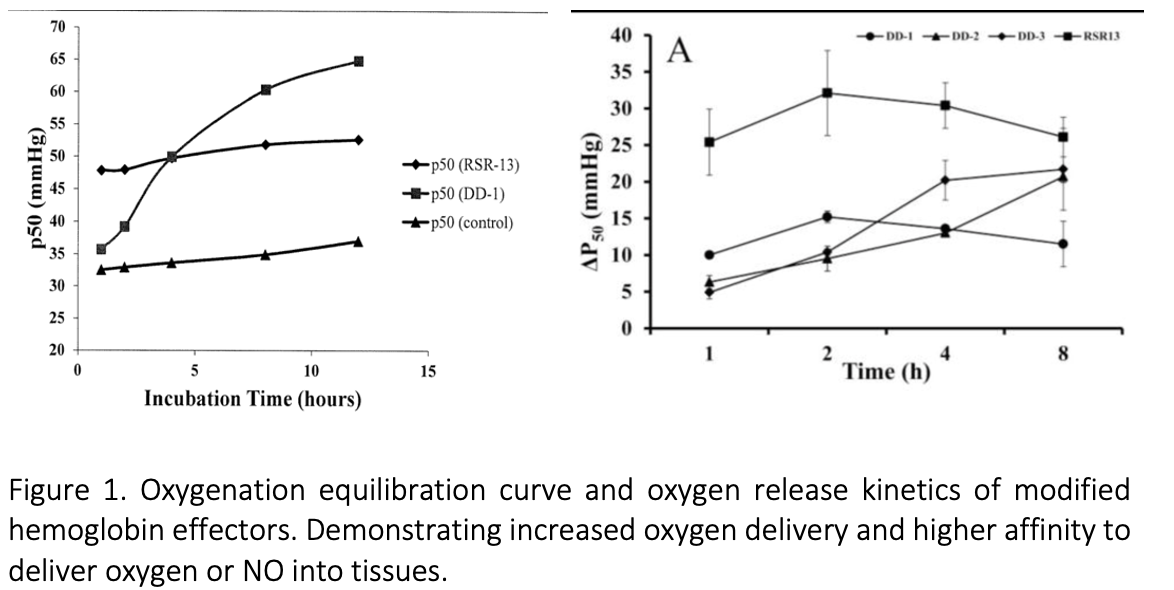Ischemia and Oxygenation
Effectors of Hemoglobin for Enhanced Oxygen and Nitric Oxide Delivery
Simultaneous Tissue Delivery & Enhanced Bioavailability of Oxygen and Nitric Oxide
Nitric oxide (NO) is an important signaling molecule involved in many physiological processes. It is most notably recognized for induction of vasodilation that increases blood flow and oxygen delivery to tissues. In addition, NO also exhibits anti-inflammatory and anti-oxidant properties. As a result of NO’s beneficial properties, there has been a great interest in developing the means to exogenously deliver NO for therapeutic purposes or to enhance its endogenous production and bioavailability. The compounds that can simultaneously deliver NO and improve its bioavailability will find application in treatment of disease states characterized with decreased blood flow and oxygen delivery to the tissues.
The technology
VCU researchers synthesized a novel compound with NO-releasing moiety incorporated into existing allosteric hemoglobin (Hb) modifier. This allosteric effector of Hb stabilizes the deoxygenated state of Hb (right-shifting), which results in decreased Hb affinity for oxygen, allowing for release of more oxygen to tissues. Because Hb is an aggressive scavenger of NO, the right-shifting property of the novel compound also reduces hemoglobin binding of NO, making more NO bioavailable to tissues. Thus, the synthesized novel compound combines two properties - it can be hydrolyzed in vivo to release NO, resulting in free NO and the parental allosteric modifier molecule, the former enhancing blood flow via vasodilatory effect on blood vessels walls, while the latter acting as a right-shifter increasing oxygen release from Hb to the tissues.
The novel compound, based on the beneficial pharmacologic properties of NO, has advantageous effects by reducing inflammation, increasing tissue perfusion, decreasing blood pressure, and acting as anti-oxidant. It also assists in vasodilating the microvasculature to enhance tissue blood flow and thus oxygen delivery, which will be useful for treating ischemic-related diseases, such as myocardial ischemia and stroke.

